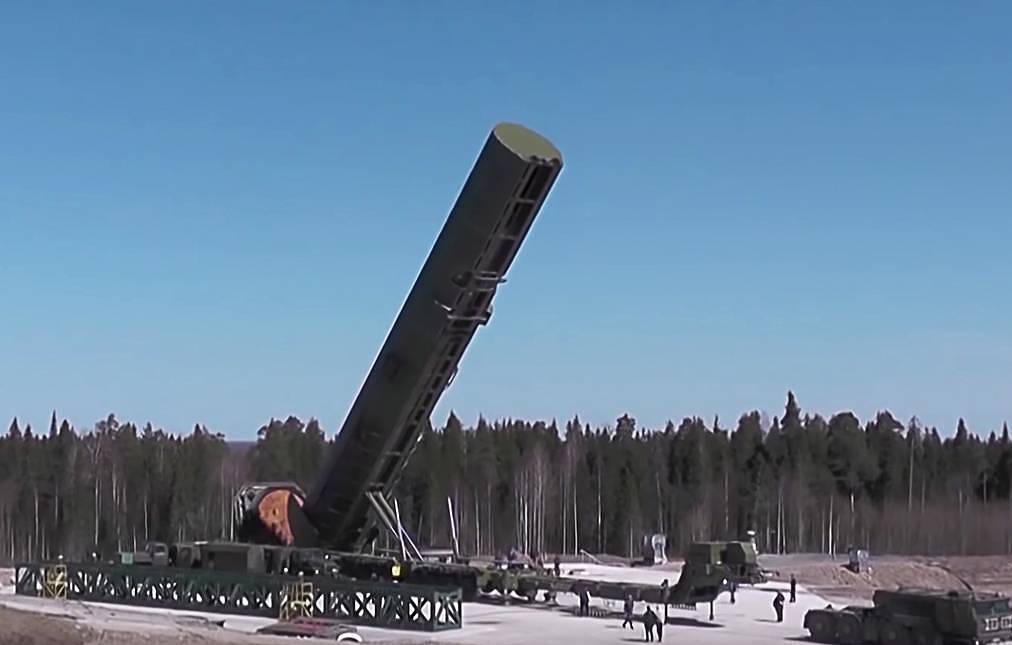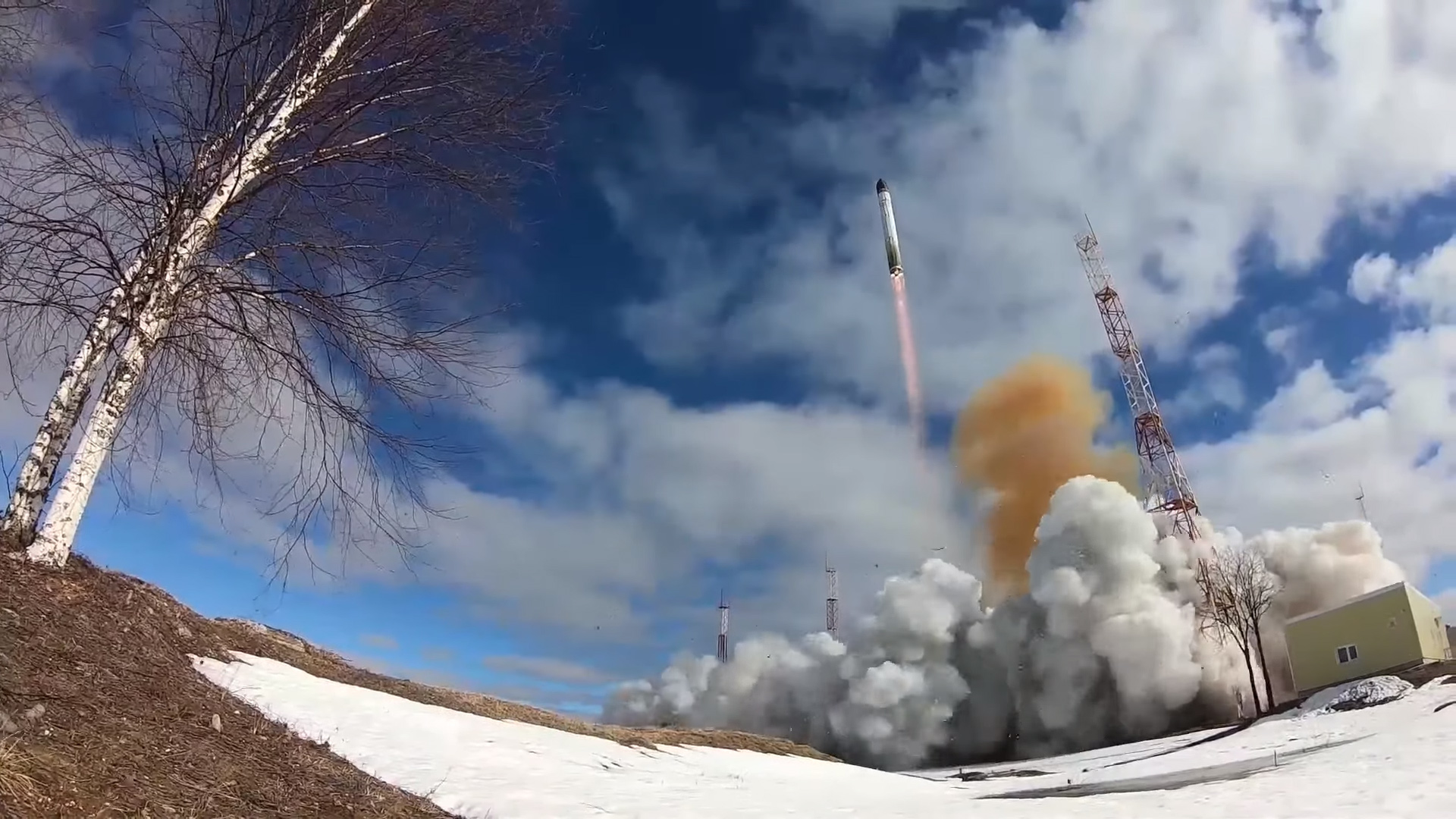Last month, Russia successfully test-launched its Intercontinental Ballistic Missile (ICBM) Sarmat amid an escalation in hostilities with Ukraine. Moscow has since used it to project power and issue covert warnings to its adversaries.
TWO ‘Super Weapons’ That Even USA Lacks – Is Russia’s Use Of Laser Weapons, Hypersonic Missiles Just A Propaganda?
In the backdrop of rising tensions between Russia and NATO over Ukraine, the Russian Strategic Missile Force Commander Col. Gen. Sergei Karakev claimed in a recent announcement that Russia’s latest land-based Intercontinental Ballistic Missile (ICBM) Sarmat could fly over the North and South Poles and along other trajectories.
“Due to the power-to-weight ratio of the new missile system, the trajectory can change. From our notorious trajectory through the North Pole, if necessary, it is possible to lay a trajectory through the South Pole, which, in principle, is not protected today. And there are also possibilities for other trajectories – in terms of the possibility of launching into outer space,” Gen. Karakaev told the Zvezda TV channel.

The Commander went on to say that intercepting Sarmat in the coming decades will be extremely difficult.
“Today, they say that air defense does not exist for the Sarmat missile system, and it probably will not exist in the coming decades,” Gen. Karakaev predicted.
He clarified that Sarmat would be so hard to intercept because it accelerates almost as fast as missiles with lightweight solid rocket motors while being a liquid-propellant rocket.
Su-34 Pilot Killed My Brother – Ukrainian Residents Recall Horror After Downing Russia’s Top Fighter Bomber
Gen. Karakaev had previously indicated that the new Russian Sarmat ICBM would be teaming up with several Avangard hypersonic glide vehicles, as previously reported by the EurAsian Times. The Commander had noted that the development of Avangard heralded the dawn of the age of hypersonic weaponry.
Hypersonic missiles are considered formidable as it is very difficult to intercept them due to their unpredictable trajectory, incredibly fast speed, and ability to enter space and re-enter the earth’s atmosphere using a Hypersonic Glide Vehicle.

The killer combination of a hypersonic weapon with an ICBM that has excellent acceleration would make the missile invincible to air defense systems.
Though Russia’s chief adversary, the United States, is invested in developing an anti-hypersonic missile defense, it would take some time before it is officially fielded.
These announcements and claims become significant in the backdrop of the threats issued by Russia on several occasions in the past month. Earlier in May, Russian state television had warned that Moscow could sink the UK forever using its new Sarmat ICBM.
This map was broadcast on Rossiya-1. It shows that a Russian Sarmat based in Kaliningrad can nuke Berlin in 106 seconds, Paris in 200 seconds and London in 202 seconds. pic.twitter.com/KOwe9RdkOY
— Samuel Ramani (@SamRamani2) April 29, 2022
In another such threat to the West, Russian state television had simulated a nuclear attack on three European capitals, including Paris, Berlin, and London, stating that the Sarmat ICBM with a nuclear warhead would destroy these three cities in less than 200 seconds.
Now, in what could be assumed as another warning to Russia’s adversaries, the head of the country’s space agency has warned that Russia would have about 50 missiles capable of reducing all enemies to a nuclear crater, Daily Mail has noted.
Further, as per the claims of the Strategic Missile Force, the Sarmat missile would be in service for the next fifty years.
Sarmat, A Game-Changer For Russia?
Dmitry Rogozin, the head of Russia’s state-run space agency Roscosmos announced that Sarmat will be tested throughout this year, with the military receiving the missiles in the fall of 2022.
Sarmat is capable of striking targets at vast ranges using a variety of flight paths, according to the Russian Defense Ministry, and is guaranteed to defeat any present or future missile defense systems.
The ICBM system, which is said to be the most powerful in the world with a tremendous range, is believed to significantly improve Russia’s strategic nuclear forces’ fighting capabilities.

Russia is on the verge of replacing its old R-36 Intercontinental Ballistic Missile (ICBM) arsenal with super-heavy missiles capable of carrying hypersonic glide vehicles, which is where the killer combination of Avangard and the yet-to-be-inducted Sarmat ICBM comes into the picture.
According to a Pentagon assessment, it has already used over a dozen hypersonic missiles.
The Sarmat’s long range allows it to fly around its intended target, bypassing radar and missile defense systems and striking it from an unexpected angle.
Due to its huge payload, it can carry up to 15 nuclear bombs, each with its limited maneuverability. Avangard Hypersonic glide missiles, which can travel longer and faster while flying in an unpredictable direction to avoid missile defenses, can replace the payload.
As the hostilities and war of words between Russia and the West become intense by the day, the Sarmat missile could play the role of a deterrent with its induction a few months from now.
- Contact the author at sakshi.tiwari9555@gmail.com
- Follow EurAsian Times on Google News




